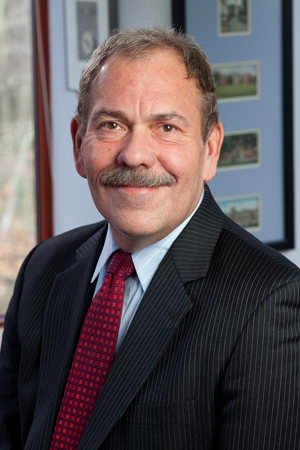Imagine higher education as a grand bazaar offering an unlimited array of choices. You could create your own college program online—the University of Yourself—and get a degree or certificate the way you get television programming on Netflix or Amazon. You could choose a course of study directly from a world-class provider, studying art from the Museum of Modern Art or German literature from the Goethe Institute, or become certified in coding or information technology directly from Google. You could take courses offered by retail giants Alibaba and Amazon and then intern with these companies online.
Sound far-fetched? We are in the early phases of a great upheaval in higher education that will allow people to stream any course of study directly from the company or cultural agency best known for it. A transcript will include not just your courses and degrees but certifications in anything you accomplish, from mastering conversational Spanish to demonstrating proficiency with TikTok. Conventional college credits will lose value. The skills and knowledge students have mastered will matter more than how long they spent learning.
This smorgasbord of choices means the consumer can select where, when, what, and how to study—a full four-year degree program or just a few hours of instruction. Students will be able to shop for the best prices, the best quality, and the most popular consumer choices for whatever they wish to learn. (Imagine the advertisements: Smithsonian’s BOGO Sale Begins Now!)
These are among the findings of a study Scott Van Pelt and Arthur Levine conducted on the future of higher education. It employed historic, comparative, and trend analysis in areas such as demographics, the economy, and technology. It concluded that higher education will change in four fundamental ways—ways that will both influence and be influenced by parallel changes in K–12 education.
Fundamental changes in higher education
Consumers, not institutions, will control the future of higher education. Students will want the same things they are now receiving from music, movie, and news providers—low-cost, anytime/anyplace access, and personalized content.
New content producers and distributors will enter the higher education marketplace, driving up institutional competition and consumer choice and driving down prices. Today, non-collegiate higher education providers—ranging from software and hardware makers to television stations and museums—are booming in number and enrollment. For example, enrollment in traditional colleges declined significantly during the pandemic. Coursera, a subscription-based digital learning platform that offers content from top universities, brand-name corporations, and leading cultural agencies, saw its enrollments jump from 53 to 78 million students. That 25 million student increase is more than the entire enrollment in traditional U.S. higher education.
The industrial-era method of accounting for academic credit through time spent in the classroom will shift to a knowledge-era accounting system based on what people actually learn. While industrial societies standardized time and process in the manner of an assembly line, knowledge economies focus on outcomes—process and time are variable. Our colleges were created for the former era and need to be refitted for the emerging world.
Higher-education degrees will be less influential and short-term credentials will increase in status and value. The need to expand knowledge and skills to ensure that workers can remain relevant in the face of technological advances, the emergence of new fields of work, and changes caused by COVID promises to tilt the balance toward specific, in-demand skills. These skills are closely aligned with the labor market and will come in new types of credentials, not degrees, and the students who pursue them will constitute the new majority in higher education.
A New Higher Education System for a New Era
This will only be the second major transformation in U.S. higher education history. Three hundred years ago, our only colleges were the classical colleges like Harvard and Yale, which educated ministers and offered a curriculum rooted in that of the medieval university.
After the Civil War and the rise of Industrial America, the nation needed scientists, engineers, business leaders, doctors, lawyers, teachers, and white-collar workers. The classical college was transformed into universities, technical schools, graduate schools, community colleges, and specialized institutions for women and Black people, who were largely denied access to higher education.
As America shifts from a national, analog, industrial economy to a global, digital, knowledge economy, higher education will be transformed once again.
Challenges and Opportunities
Every college and university in the country will be forced to change. The transformation won’t be kind to all institutions. Some—particularly major research universities and selective residential colleges—will be better able to adapt to the changes in a piecemeal fashion. Others, such as community colleges and regional universities with predominantly commuter, working, and part-time populations, are at greatest risk of being disrupted by the new providers.
Students will be presented with a choice: Do you want to attend a traditional college or study with a new provider? A traditional college, a known entity, will offer primarily face-to-face instruction and degree programs. However, it is likely to be more expensive, takes longer to complete, lacks 24/7 access, and falls short compared to the cutting-edge faculty or technology of many of the new competitors. A select few of often exclusive colleges can match the prestige, name recognition, or the certification value of a Fortune 100 company like Google. Perhaps students will choose some of each.
However, for many students, there won’t be any choice due to the higher cost, inflexible schedule, and campus-based location of most traditional providers. For this reason, there is a very real danger of creating two separate and unequal higher education systems—four-year residential colleges for the elite; and online, low-cost programs for others, particularly low-income populations and people of color.
The individualization of the emerging higher education system may also undermine the common learning in student studies, called general education, which is the learning essential to building shared bonds among Americans and supporting a democratic society. This comes at a time when the nation is deeply fractured and divided.
Many see additional risks in digital communication overtaking human interactions, and the universal overshadowing the local. We have seen this in studies of young people’s sense of connectedness, and as local newspapers are folding, and neighborhood bookstores and pharmacies are being replaced by door-to-door delivery. Community colleges and local four-year public colleges will need to make themselves indispensable to their communities, reaching deep into the fabric of neighborhoods and developing high-value programs that can’t be replicated elsewhere.
Implications for K-12 Education
K–12 education will experience some of the same demographic changes as higher education. The student population will become even more diverse. An aging population will increase competition for resources by pitting the need to increase funding for education against equally pressing needs to support programs such as Medicare and Social Security.
As in higher education, students will begin to take courses developed and delivered not only by the local school but by cultural organizations, libraries, museums, media companies, and others. These shifts will be supported by new digital technologies that will augment self-paced learning, provide simulations to help master concepts, and even offer behavioral support. We will see schools jettison standardized tests and replace them with authentic measures of performance and a student portfolio that demonstrates the kind of skills and competencies required for citizenship and work. Like colleges, schools will introduce a new core curriculum that ensures that students master the 5 Cs—critical thinking, creative thinking, communication, collaboration, and citizenship—that will help them succeed post-graduation.
The old industrial, assembly-line model assumes that young people learn best when they learn the same thing at the same pace. In the new model, students’ pace through grade levels will be driven by their capabilities; those who struggle will consequently get more attention. High school will no longer be a holding pen for students to reach the age of maturity to graduate; a significant percentage of students will already be enrolled in college.
The boundaries of learning will increasingly extend beyond the school walls, schools will be more intentional in building on students’ interests in learning, and students will be more aligned with career options from an early age. We’ll see organizations combine discovery-based inquiry with interdisciplinary content and storytelling and other means of connecting complex content with urgent, real-world implications to individual learners. With these changes, the nature of educational transcripts also will change. Lifelong transcripts will characterize—and certify—what people know and can do over a lifetime of learning.
Good news and bad news
The transformation of K-12 and post-secondary education, like all change, presents both challenges and opportunities. With a wider array of choices, students will need expert guidance to choose their paths. A conventional college education may still be the best opportunity and sought-after experience for many students, and the good news is that improved teaching and learning in K-12 may lead to better preparation for this trajectory. The bad news is that the best opportunities for students may still be available largely to those with the most resources. The biggest challenge, we believe, will be ensuring that all students have access to the kind of learning they want and that will support their goals—whether it be a traditional college or low-cost online institutions geared toward providing credentials.
© Cognia Inc.
This article may be republished or reproduced in accordance with The Source Copyright Policy.
The information in this article is given to the reader with the understanding that neither the author nor Cognia is in engaged in rendering any legal or business advice to the user or general public. The views, thoughts, and opinions expressed in this article belong solely to the author(s), and do not necessarily reflect the official policy or position of Cognia, the author’s employer, organization, or other group or individual.


